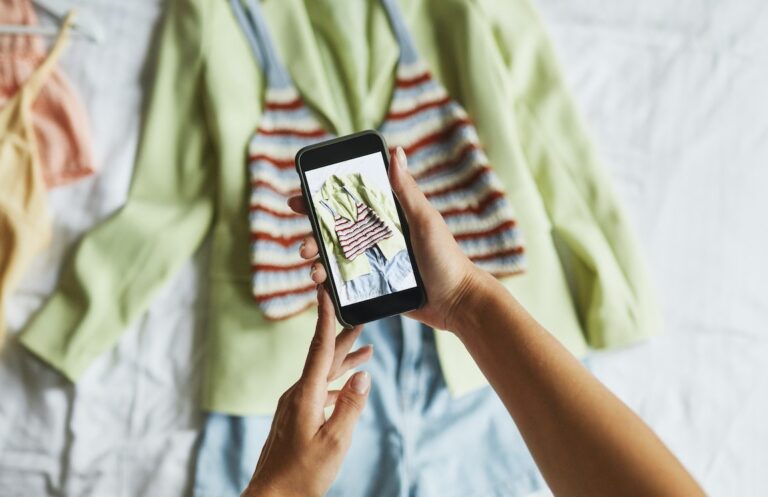In recent times, the practice of buying pre-owned apparel has experienced an upsurge in popularity. Thanks to its cost-effectiveness and eco-consciousness. As technology continues to advance, a multitude of applications have emerged to satisfy this burgeoning desire for second-hand clothing.
These platforms proffer a diverse array of choices, spanning from haute couture to everyday attire. This renders it a breeze for individuals to acquire distinct and sustainable garments. Within this article, we shall delve into the preeminent set of apps for purchasing used clothing.
Table of Contents
1. Vestiaire Collective
Vestiaire Collective, a preeminent digital platform, facilitates the exchange of pre-owned upscale clothing and accessories. The platform offers a myriad of luxurious wares from illustrious brands such as Chanel, Gucci, and Louis Vuitton, as well as voguish designers, including Ganni and Acne Studios.
It grants patrons access to an array of high-quality stuff, attainable at a relatively reduced cost. In addition to being economically viable, this alternative serves as a sustainable and ecologically sound option for fashion enthusiasts.
Nonetheless, despite the second-hand nature of these items, their prices may remain exorbitant. The procurement of certain items may be restricted, with limited supply and immense demand. This makes me triggers the possibility of disappointment and frustration for potential buyers.
2. ThreadUP
ThredUP, a company specializing in the sale of pre-owned clothing, allows for the purchase and sale of high-quality, gently used items. Those that do not meet their exacting standards are recycled or donated. ThredUP has several advantages, including significant cost savings of up to 90% compared to the original retail price.
Their commitment to customer satisfaction is reflected in their A+ rating with the Better Business Bureau. The company sends a free clean-out bag to customers, which they can then fill and return. ThredUP has an extensive selection of new and almost new items that are in impeccable condition. Nonetheless, ThredUP can occasionally have drawbacks, some prices may be a bit steep, and shipping times can be long.
3. Vinted
Vinted, a peer-to-peer marketplace for previously-owned clothing and accessories, first launched in Lithuania in 2008. Today, it boasts over 45 million members spanning more than 30 countries worldwide. Vinted’s widespread popularity is largely due to its streamlined and effortless approach to purchasing and selling fashion goods, a feat achieved through its masterful layout and design.
Furthermore, users are granted the privilege of engaging in personalized, one-on-one communication with fellow members and have the option of bargaining. An additional advantage of Vinted is its practice of solely imposing a purchase protection fee and not any sales commission.
Nevertheless, some drawbacks to Vinted’s platform are the risk of fraudulent activities and the user’s responsibility of coordinating both shipping and returns. Taken as a whole, Vinted is an exceptional platform for both procuring and selling pre-owned clothing.
4. Grailed
Grailed is an established consignment store that caters to the sartorial needs of consumers in search of luxury clothing, including Couture Ensembles. The user interface is sleek and uncluttered, fostering an intuitive and seamless experience when perusing and pinpointing particular garments. Grailed is a financially robust and genuine second-hand apparel forum, an indisputably reliable alternative for vendors and purchasers alike.
Nevertheless, potential pitfalls may manifest, so it is prudent to be cognizant of the drawbacks. Besides, while Grailed has a broad selection of goods, it may not be the optimal preference for shoppers seeking bargain-priced previously-owned garments. In general, Grailed is an exemplary selection for those in pursuit of upscale consigned garments and a reputable marketplace for re-sale.
5. Mercari
Mercari, an internet-based bazaar, provides a secure venue for the exchange of new, used, and antiquated products. Established in 2013, Mercari is a communal marketplace where members can put up for sale a myriad of household wares. This platform boasts a distinctively uncomplicated mechanism for creating product listings and transporting items. With Mercari, you can anticipate encountering a vast selection of merchandise, spanning from apparel to electronics.
What sets it apart from competing platforms is its diversity of items and reduced commission rates. In addition, sellers can list their items at no charge, making it a budget-friendly option for online retailers. Nonetheless, some of the drawbacks include the absence of seller protection and susceptibility to fraudulent schemes.
Read also: Creating apps with ChatGPT and Al is possible: the surprising implications
Why is there growing popularity of second-hand clothes
The surge in popularity of pre-owned garments can be attributed to a myriad of factors. Subsequently, it presents a more economically feasible alternative for consumers who find themselves financially constrained when it comes to acquiring newly minted attire from upscale fashion houses.
In addition, the increase of virtual marketplaces and applications dedicated to the exchange of second-hand garments has ushered in an era of enhanced accessibility and convenience. This affords consumers an extensive array of options at their fingertips.
Lastly, a booming awareness and concern regarding the damaging consequences of fast fashion on the environment and the rights of laborers have propelled consumers toward the quest for ethical and sustainable alternatives. So it is important to underpin the growing momentum of the pre-owned clothing movement.
Read also: The best 7 apps for booking cheap flights












